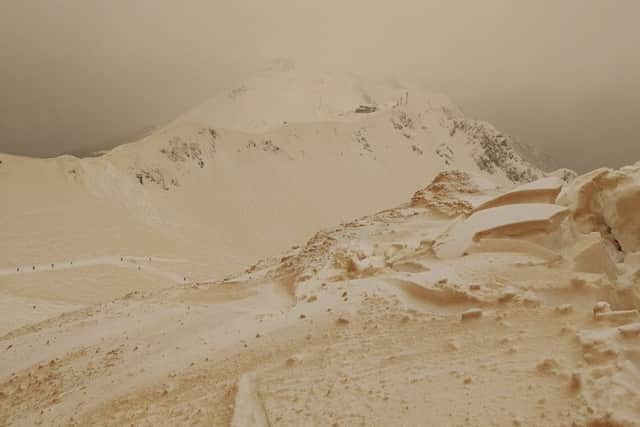Orange snow has been falling in Eastern Europe - here's why
The fact the white stuff has a sepia tinge has been baffling some. Katrin, who was snowboarding in Sochi, where the Winter Olympics were held in 2014, said “it was very unusual”.
What is orange snow?
Orange snow occurs when sand from the Sahara desert – known as Saharan dust – is blown up into the atmosphere and deposited elsewherel.


It then falls to the ground, mixing with the snow.
How does Saharan dust move?
Advertisement
Hide AdAdvertisement
Hide AdStrong winds can blow dust and sand into the sky and then transport it in the direction it is travelling – sometimes thousands of miles, according to the Met Office.
However, it is very rare for the dust to mix with snow. “It looks as if it is real [from the photos] although possibly slightly exaggerated,” Martin Bowles, a meteorologist at the Met Office, told i.


Read more at:
“There is a lot of Saharan dust around the Mediterranean, [with some] stretching to southern parts of Russia. This dust has got mixed up with the snow so it looks orange on the surface. It’s mostly in Russia but has possibly affected some other European countries – it’s not particularly widespread.”
What is more common is for the Saharan dust to fall with rain – this can lead motorists to spot a layer of dust on their cars, said Mr Bowles.
“When the raindrops fall, they collect particles of dust on the way down. Then when the raindrops land on something and eventually evaporate, they leave behind a layer of dust,” according to the Met Office. This happens about once or twice a year in Europe.
Is Saharan dust a problem?
It is a form of pollution and will affect air levels. It can also have an impact on people’s breathing.
“You can get situations when the Saharan dust at low levels is sufficient to cause people with chronic respiratory problems to have extra problems than they usually would,” said Mr Bowles.
This story first appeared on our sister site iNews.